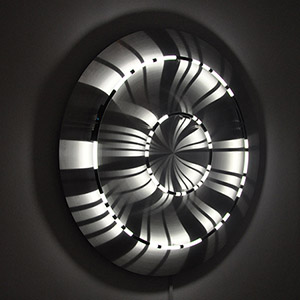Charged: Jim Campbell in NYC
The artist brings his sculptural LED “light films” to New York, taking over museums, galleries and ballets

While the boundaries between contemporary art and technology have grown increasingly blurry—thanks to everything from biologically-inspired knitted structures to oil that “defies” gravity—there are, surprisingly, only a handful of artists who delve deep into the specs and circuits of light technology. One of them is Jim Campbell. Equipped with a degree in electrical engineering and mathematics from MIT, the San Francisco-based artist employs video, light and other electronic elements to create his sculptural LED installations.
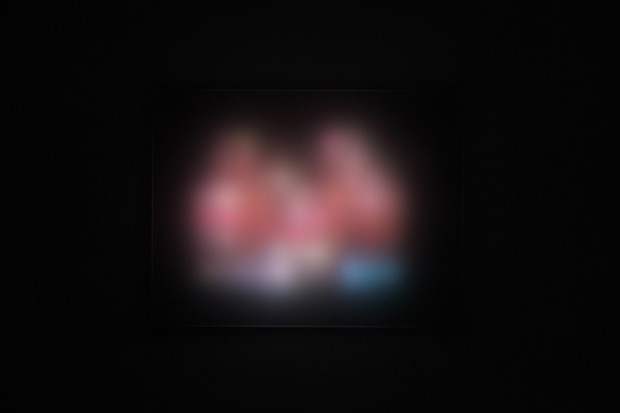
Campbell is well known for works such as “Exploded Views” (2011), commissioned by and premiered at the San Francisco Museum of Modern Art. When viewed from below, it appears to be random strings of 2,880 flickering LED lights. But for those who take it in from a higher vantage point, it becomes a three-dimensional surface—a kind of movie screen—on which various films containing shadowy figures play out. What was once visual noise turns into cinematic imagery, an analogy for how the human brain tries to interpret more and more data as technology advances. CH has long followed the artist’s path, from his early exhibitions at Bryce Wolkowitz Gallery to his works that focused on time as journey at the newly renovated Museum of Contemporary Art in Sydney. Campbell’s current commissions include a permanent public art piece for the new Central Subway line in San Francisco, expected to be finished by 2017. For the future Union Square/Market Street Station, he’s teamed up with Werner Klotz to produce the installation “Reflected Loop,” a winding, unified loop of light and ambient reflections.

This March 2014, Campbell is taking over NYC with his first solo museum exhibition, Jim Campbell: Rhythms of Perception, at the Museum of the Moving Image, featuring over 20 works from his 30-year career as well as premiering a new work, “Self Portrait of Jim Campbell (with Disturbances),” 2014. This major retrospective coincides with an exhibition of recent work—aptly titled, “Jim Campbell: New Work“—at Bryce Wolkowitz Gallery in Chelsea. Campbell’s work was also on view at The Armory Show. Capping it all off, “Constellations,” a performance by the SF-based Alonzo King LINES Ballet that incorporates a light installation by Campbell and premiered in 2012, will be showing at The Joyce theater.
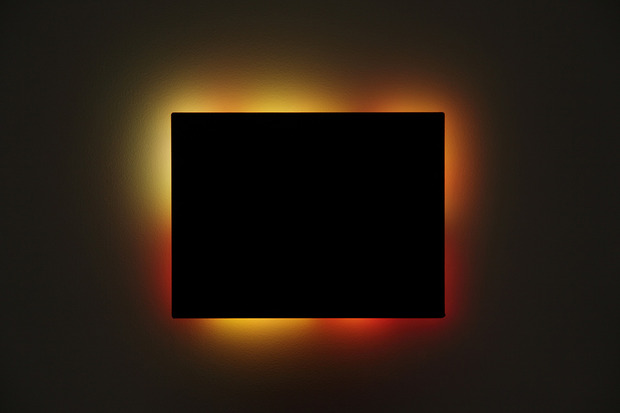
We managed a sneak peek during the early installation of Campell’s pieces at Bryce Wolkowitz Gallery—a real feat itself considering all the intricate technology involved, often requiring repairs and troubleshooting. Seven different works will be on exhibit, including one large installation that will greet visitors as soon as they enter the gallery area. Craig Dorety, a fellow artist who also holds a degree in mechanical engineering and who has been Campbell’s assistant for the past six years, walked us through what the new work entailed.

“He’s done these ‘Home Movies’ works in the past, but these are now in full color. They used to be just white LEDs,” says Dorety. “Jim designs all of the circuitry for his works, including the computers that run the artworks, so it’s totally custom from the ground-up—nothing off the shelf.”
As for the source material for all the fuzzy shapes and colors on display, Dorety explains, “It’s a combination of Jim’s personal home movies and also home movies that he’s sourced through eBay and other families.” Noting our surprise that home movies are sold online, he continues, “Often when older people in the family die, there’s just inherent value in the content.”
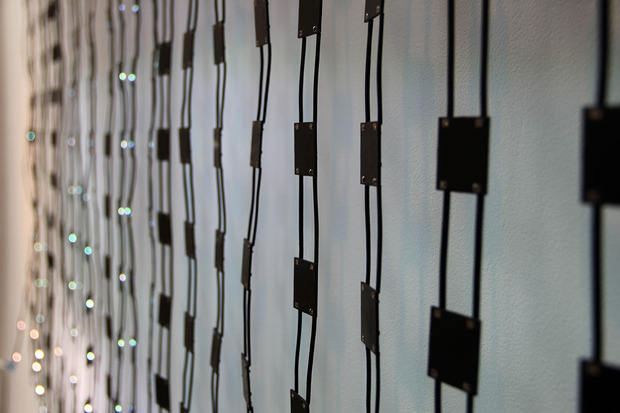
As a 19-year-old, Dorety first saw Campbell’s work while installing a piece for a sculptor at the San Jose Museum of Art. “This was in 1996 and I had never seen anything like it before,” he says. “While working for that sculptor, we were doing a public piece and he had to hire an engineer to examine the structure to make sure it was safe—and that really inspired me as a young artist. I thought, ‘Hey, if I want to do big, complicated artworks, I should study engineering, not art.'”

Campbell’s career trajectory is similar—he was originally a filmmaker who became a full-time hardware engineer in Silicon Valley, designing controllers for high-definition display systems like televisions and computers. (He holds more than a dozen patents related to video image processing.) It was Campbell’s frustration with the medium of film that made him consider the technology he was working with from a different perspective. “At one point he had a revelation about his art,” explains Dorety. “He was working with the highest resolutions possible and they were continuing to get larger and larger—and he thought, well, what is the lowest resolution? How low can you go? So he started to create these small LED boards and he designed the boards so you can cut parts of it off. And so he cut pieces off until he had the smallest number of pixels in which you can recognize moving imagery—and it was 8 by 12.” Dorety muses, “He’s a progenitor. He was groundbreaking, and he still is groundbreaking, in technology and filmmaking and art, and the conjunction thereof.
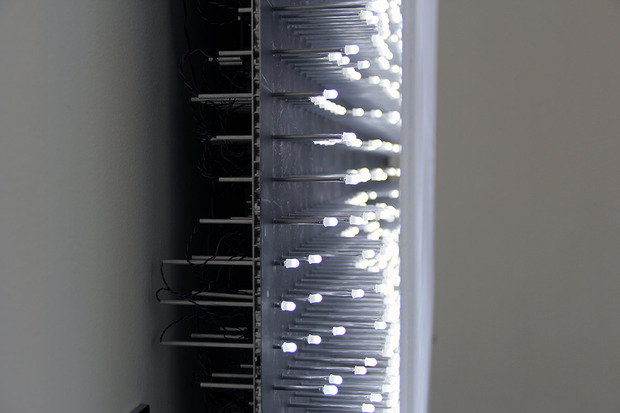
We later put it to Campbell directly: what obstacles does he face, whether conceptually or technically, working in his unique medium of electronics, lights and circuits? “I dig my own holes, I guess. It’s not an obstacle, but for every kind of new work, it takes me a long time to figure out what imagery would work for that kind of display. Any of the work you saw in the gallery is [a type of] display device.” The challenge, Campbell notes, is striking the right chord “emotionally, conceptually and also psycho-perceptually, meaning I’ll put a certain image in a certain work and you can’t tell what is it due to the low-resolution. But if I put it in another work, you could see exactly what it is.”
Back in the gallery, Dorety points to where “Home Movies” projects blurred colors on to the white wall. “You see a child swinging on a swing, right? For me, that brings back memories of my childhood. So I’m suddenly feeling a connection with it because that could be me on that swing, or my sister. There’s no detail to recognize faces, so your brain wants to put its own memories in place there, so it has something to perceive.”

Gesturing to “Topographic Reconstruction” (2014), in the midst of being installed, Dorety says, “This is generated from a photograph of waves crashing on the beach. We’ve actually carved that photograph into the resin, and then it will be backlit by moving imagery of waves.” Campbell doesn’t exclusively use LED lights as his medium; he’s interested in the properties of light, such as diffusion, and how it interacts with different materials. In another work, “Untitled Topography” (2014), a cluster of clouds is created by the distance that each LED is from the diffusive Plexiglas.
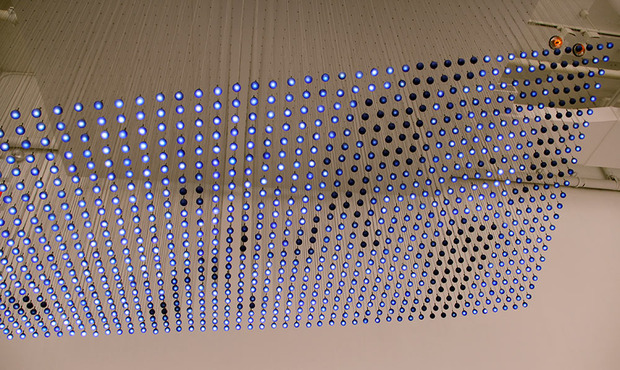
Light may be the way that we see objects more clearly in reality, but in Campbell’s works light is the mechanism that triggers the viewer to see something unique, perhaps something that’s been hidden deep down inside, something of a “psychological mirror.” You don’t necessarily see in “high-def”; Campbell’s low-resolution works illuminate how much more is gained when things are stripped down, details taken away.
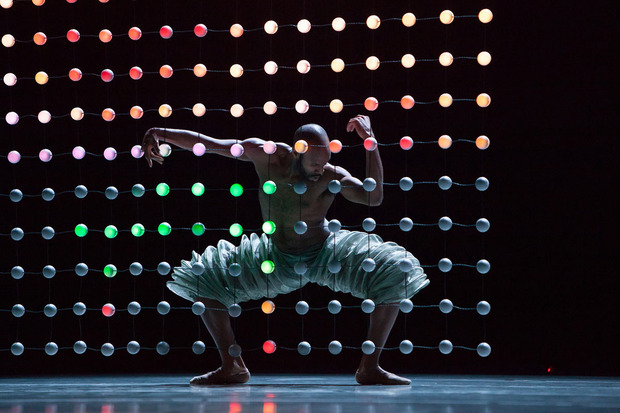
“Jim Campbell: New Work” is on view at Bryce Wolkowitz Gallery from 7 March to 19 April 2014, and features the artist’s most recent series of sculptural light installations. His survey exhibition, “Jim Campbell: Rhythms of Perception,” will be on view from 21 March to 15 June 2014 at the Museum of the Moving Image. And performances of “Constellation” by the Alonzo King LINES Ballet will be held from 18-23 March 2014 at The Joyce theater. All venues are located in NYC.
“Ambiguous Icon #2 Fight,” “Exploded View Commuters” and “A Fire A Freeway and a Walk” images courtesy of Sarah Christianson, black and white “Home Movies” image courtesy of Olivia Body, color “Home Movies” image courtesy of Bryce Wolkowitz Gallery, “Constellation” performance images courtesy of Alonzo King LINES Ballet, all other photos by Nara Shin
